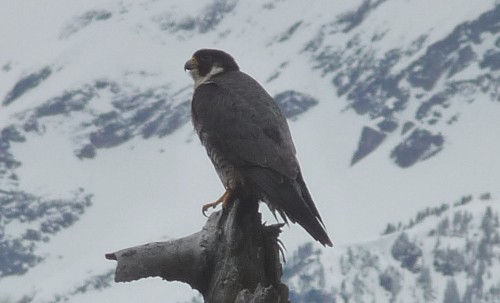The State of the Birds
 Springtime is slowly and reluctantly arriving in the North Cascades. I’ve been delighted to hear some familiar bird songs returning; brightening up the forest and telling me that while there is snow on the ground, spring is coming!
Springtime is slowly and reluctantly arriving in the North Cascades. I’ve been delighted to hear some familiar bird songs returning; brightening up the forest and telling me that while there is snow on the ground, spring is coming!
While the birds are announcing spring, the Cornell Ornithology Lab, in partnership with many conservation organizations and government agencies, is announcing the State of the Birds Report. The State of the Birds Report is a comprehensive evaluation of the health of United States bird populations (The full report, can be read here). The diagnosis is not good: bird populations have been declining severely in the past 40 years. However, the report includes some successes and a plan for how we all can help protect our valuable natural resources and our bird populations.
“We can make a difference. Because while it is true that many birds face extinction because of the intervention of people, their survival is made possible only through the intervention of people.”
The good news is that conservation efforts have brought some species back from the threat of extinction, and stabilized habitat decline. The bad news is that U.S. bird populations are still facing many threats including habitat loss, climate change, invasive species and pollution. These are not irrevocable problems, though. There are many organizations, agencies and individuals who are dedicated to protecting our valuable natural resources and bird populations. The strategy for bird conservation is twofold. First, to keep track of the status of endangered species and keeping them from declining further. Second, to manage common species so they do not become threatened or endangered.
What You Can Do
1. Get to know your local birds. Birds are all around us and they play important roles in our ecosystems. How many birds do you know as neighbors? Enjoy some outdoors time in your backyard, city park or national park and see what you can find!
- Take a birding class.
- Your local Audubon Society chapter can provide resources, bird walks and classes.
- The North Cascades Institute is offering a number of birding class this spring, including: Colors and Calls: Birding by Ear, Spring Birding Weekend: Neotropical Migrants, and Methow Migration: Spring Birding.
2. Make Simple Every-day efforts to help birds. Suggestions from the State of the Birds include easy things such as turning off lights when you leave the room and keeping your cat indoors. There’s probably something on the list that you’re already doing to help birds.
3. Get involved in citizen science. Help monitor populations of endangered and common birds, no experience necessary! Even casual and new birdwatchers can help scientific research.
- State of the Birds suggested citizen science projects
- Add to the eBird database. eBird is a simple way to count and keep track of birds that you see every day in your neighborhood or on birding trips.
- Start Nature Mapping (many states besides Washington have Nature Mapping programs, too!). Much like eBird, citizen science results go into a state-wide database on animals and habitats; helping us know the health of our bird populations.
- If you’re local to Washington, join the Puget Sound Bird Observatory in their bird surveys.
4. Join conservation efforts. There are many conservation organizations out there working hard to protect bird populations and threatened ecosystems.
Peregrine Falcon photo courtesy of Jenny Frederick.

Kelly,
What an outstanding blog entry. The information, references, and “what you can do” was simply brilliant! This was so educational and it also gave me a sense of hopefulness for the future of our birds, as well as reminding me that we make differences in the world…. I want to try my best to always be a positive influence on the beautiful natural world I am a part of!
This picture is awesome, too!!
Katie
Cool – there are a lot of great references in this entry! This is really informative.